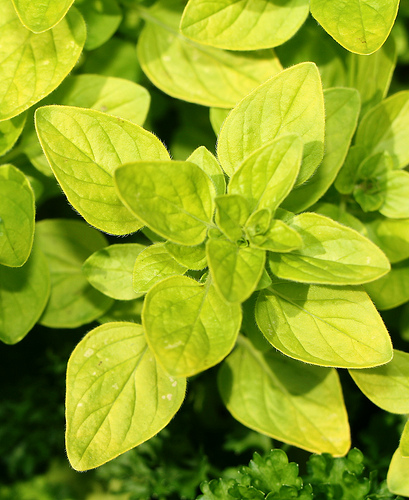
Basil doesn't grow terribly well here in the Pacific Northwest, but if you can find the right spot for it, it can work its way up to something halfway decent before the first frost comes along and kills it. Basil is, at heart, a Mediterranean and tropical Southeastern herb which loves the poor soil and merciless heat of places like Italy and Thailand.

Image courtesy Flickr/cinnachick
Basil nutritional information
Like most herbs, basil offers a lot of nutritional benefits to be had in the form of volatile oils and flavonoids. Among others, basil contains orientin and vicenin, both of which have been shown to have remarkable antibacterial properties in the lab. They also have antioxidant powers that can help protect your chromosomes from damage by free radicals.
In fact, the essential oil from basil is currently under a lot of scientific scrutiny for its potency against pathogens. In a world where antibiotic-resistant strains of bacteria are on the rise, basil essential oil may have the answers to stop these plagues in their tracks.

Image courtesy Flickr/kstenqnen
Choosing and storing basil
I have no use for powdered basil. None. When it comes to basil, it's either fresh or it's nothing. There's just no point to the dried version. It's a waste of money.
There are two basic kinds of basil: regular and Thai basil. You will probably only want Thai basil if you are planning to cook Thai food. You can find Thai basil at many international grocery stores. It has a purplish hue. Most of the time you will be encountering regular basil, which has tender green leaves about the size of your thumb.
You can buy bunches of basil at many grocery stores. This will keep just like fresh flowers: cut off the ends, put them in a jar of water, and put the whole thing in the fridge. Or leave it on the counter if you will be using it soon.

Image courtesy Flickr/wEnDaLicious
A great thing I recently discovered is a basil paste which is sold in my grocery store's cooler in the produce section. It comes in a squeeze tube, and is just macerated basil leaves with a little bit of carrier oil. (In other words, it's not pesto: it's just mashed basil.) This is a great way to get basil out of season, or if you don't want to use very much at a time.
Using basil
Tomato salad
The easiest way to use fresh basil is to mince it up, mix it with garlic, salt, pepper, and olive oil, toss it with fresh cut tomatoes and chunks of mozzarella. This is technically called "caprese salad" if you want to get fancy about it. Who cares what it's called? It's delicious, fresh, summery, and so easy. It really does a wonderful job of highlighting the basil flavor, too.
If you're down with the carbs, add chunks of hearty bread to your caprese salad. Not only will this make the salad more filling, the bread is also great for sopping up all of the extra juice that always collects in the bottom of the bowl. (If you're not a carb-eater, just drink the juice straight from the bowl. I won't tell!)

Image courtesy Flickr/www.justgrobio.com
Pasta
Basil on pasta is classic for good reason. Throw handfuls of basil into pasta sauce to perk up the flavor, or mince it and toss it with pasta and olive oil for a simple dressing. When it comes to basil and pasta, you basically cannot go wrong.
Pesto
A word of caution: I personally am very leery of pine nuts ever since suffering a bout of "pine nut mouth" a few years ago. Avoid the small, round pine nuts as sold at Costco and Trader Joe's. They are cheap, and come from China, and are basically a little bit poisonous. Why the FDA hasn't banned them yet, I can't say.
Anyway, blend basil with olive oil and pine nuts to make pesto, that ubiquitous substance of the 80s and 90s.
Drinks
Basil has such a great flavor that a lot of cooks have tried it in unexpected places. I had basil lemonade once a few years ago, and the taste was incredible. Basil can also be used in many cocktails: here are recipes for basil cocktails with strawberry, lemon, and vodka.
Main image courtesy Flickr/Adrian Midgley

1 comments